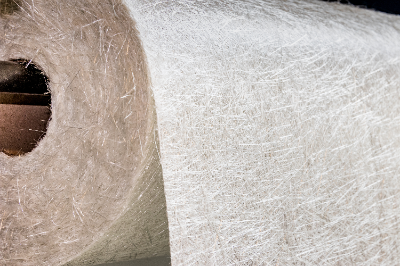What Is Fiberglass?
 Fiberglass is a long-chain fiber made from natural raw materials that have been industrially commercialized for a variety of applications.
Fiberglass is a long-chain fiber made from natural raw materials that have been industrially commercialized for a variety of applications.
The manufacturing process involves melting natural raw materials at high temperatures and extracting them as continuous fibers through pores at the bottom of an electric furnace. The final fibers are usually coated with a bonding agent to give them workability and adhesiveness.
Asbestos, once synonymous with natural fibers, was banned after its use was found to be carcinogenic, but fiberglass has not been found to be carcinogenic. In addition, it is known that even if it should enter the body, the body’s defense mechanism will eliminate it.
Uses of Fiberglass
Fiberglass is used to reinforce resins and components, and has a wide range of applications as a building material. Typical uses are for roofing materials, building interiors, and industrial equipment.
Materials that retain fiberglass have significantly improved impact resistance and rigidity. In addition, heat resistance is imparted, making the material less susceptible to expansion and contraction due to changes in temperature, humidity, and other environmental factors.
There are four main types of applications for residential use. These are glass paper, woven fabrics, glass fiber reinforced cement, and glass fiber reinforced rubber.
Glass paper is used for synthetic resin-based flooring, wallpaper, and filters. Woven fabrics are used for curtains, wall coverings, and insect nets. Glass fiber reinforced cement board is used as a cement reinforcement material, and glass fiber reinforced rubber is widely used in materials subjected to severe flexural fatigue, such as tires and hoses.
Fiberglass is also applied to plastics. Examples include glass fiber-reinforced thermoplastics for automotive parts and glass fiber-reinforced thermosetting plastics for electronic devices.